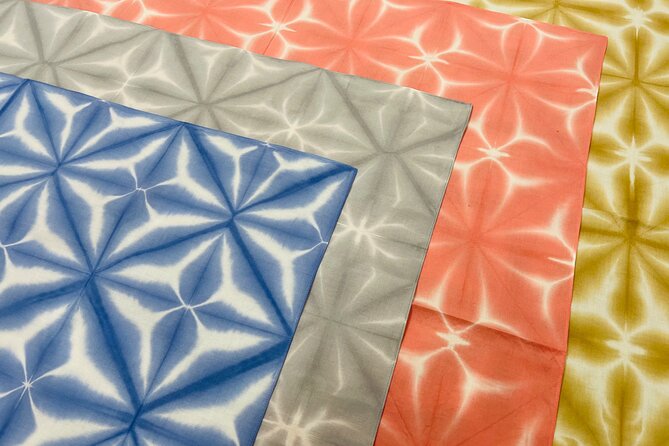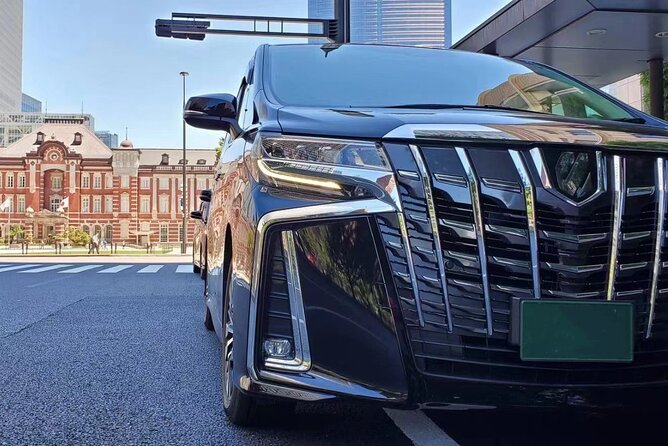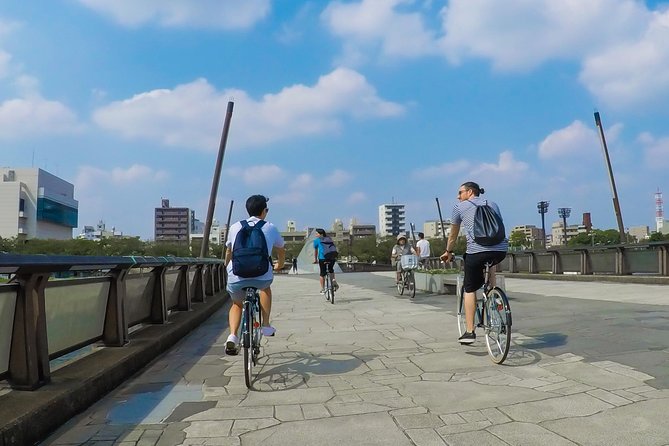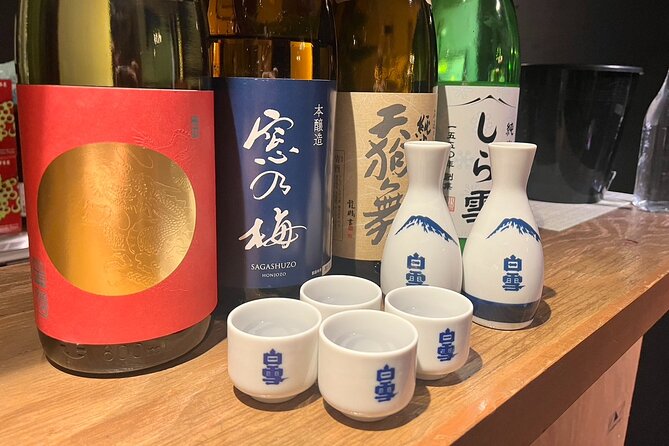Kurashiki Bikan Historical Quarter is a time capsule waiting to be uncovered. This 17th-century Japanese gem has been preserved with such precision that visitors can’t help but feel like they’ve stumbled upon a hidden treasure. The quarter’s earthen-walled warehouses, traditional tea houses, and ornate merchant mansions whisper secrets of a bygone era, while its scenic canals and unique blend of old and new create an atmosphere that’s both nostalgic and vibrant. But what’s behind the quarter’s captivating façade?
Just The Basics
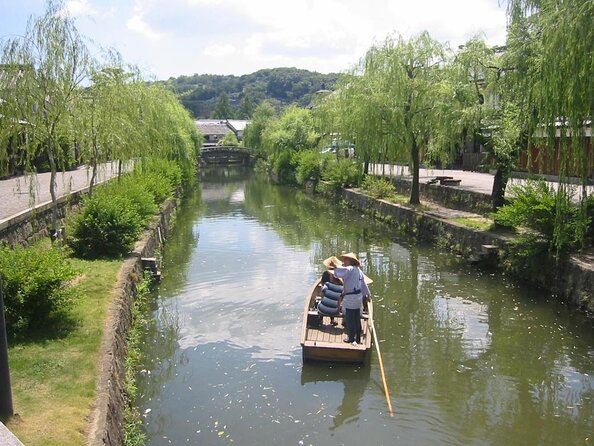
• Kurashiki Bikan Historical Quarter is a must-visit destination for anyone interested in Japan’s fascinating past, with a rich history dating back to the 17th century.
• The quarter’s architecture is a masterclass in blending functionality with aesthetics, featuring earthen-walled warehouses, traditional tea houses, and ornate merchant mansions.
• The iconic Ohara Museum of Art and Kurashiki Archaeological Museum are just a few of the cultural landmarks that showcase the region’s history, art, and traditions.
• The best time to visit Kurashiki Bikan is during the spring (March to May) and autumn (September to November), when the weather is mild and comfortable for walking.
• The quarter is easily accessible on foot from Kurashiki Station, with well-marked signs and a compact size that makes navigating the area a breeze.
History of Kurashiki Bikan
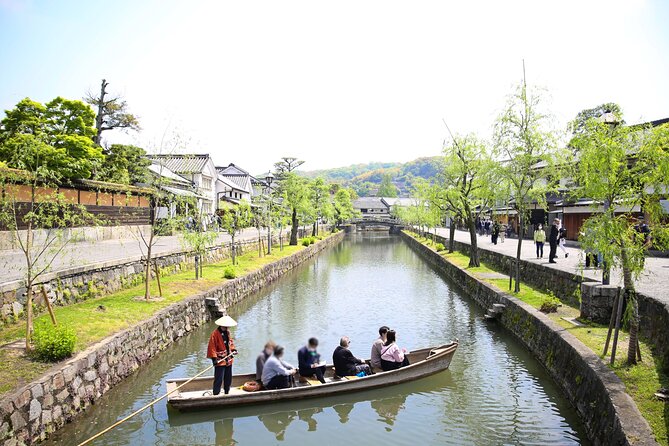
In the 17th century, Kurashiki Bikan Historical Quarter began to take shape as a vital hub for trade and commerce, attracting merchants and artisans from across Japan.
This strategic location on the Asahi River made it an ideal spot for shipping and trading goods, including rice, salt, and cotton.
As the town grew, so did its cultural significance, earning it the nickname ‘Edo of the West.’
Today, visitors can still experience the quarter’s rich history, wandering along the picturesque canals and admiring the beautifully preserved architecture.
With its unique blend of traditional charm and modern amenities, Kurashiki Bikan Historical Quarter is a must-visit destination for anyone interested in Japan’s fascinating past.
Exploring the Quarter’s Architecture
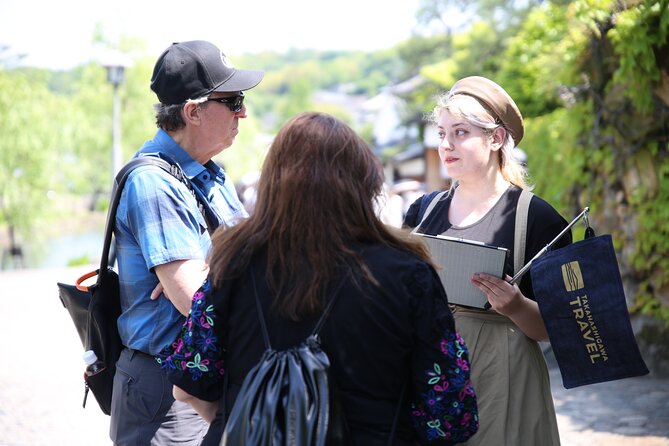
As visitors meander through Kurashiki Bikan Historical Quarter, they’re surrounded by a mesmerizing tapestry of architectural styles, with centuries-old warehouses, traditional tea houses, and ornate merchant mansions standing testament to the region’s rich cultural heritage.
The quarter’s architecture is a masterclass in blending functionality with aesthetics, as seen in the:
Earthen-walled warehouses, once used for storing goods, now house museums, shops, and restaurants.
Traditional tea houses, adorned with tatami mats and sliding doors, evoke a sense of tranquility.
Ornate merchant mansions, with their intricate wood carvings and ornamental tile work, whisper stories of the region’s prosperous past.
The quarter’s architecture is a living, breathing testament to the region’s history, inviting visitors to step into a world of elegance and refinement.
Cultural Significance and Landmarks
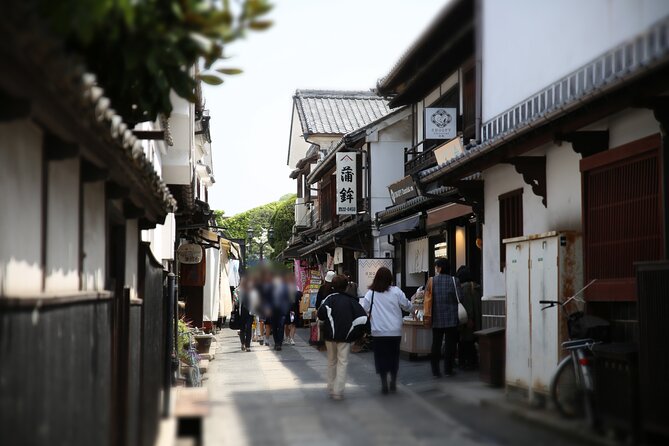
Beyond its captivating architecture, Kurashiki Bikan Historical Quarter pulsates with cultural significance, boasting landmarks that whisper secrets of the region’s storied past.
The quarter’s charm lies in its rich heritage, where tradition and history seamlessly blend with modernity.
The iconic Ohara Museum of Art, for instance, showcases an impressive collection of Japanese and European art, while the nearby Kurashiki Archaeological Museum delves into the region’s ancient roots.
The historic canal, lined with traditional warehouses and merchant homes, is a testament to the quarter’s former prosperity as a major rice-trading hub.
As visitors wander through the quarter’s narrow streets, they can’t help but be enchanted by the area’s unique blend of old and new.
Best Time to Visit Kurashiki Bikan
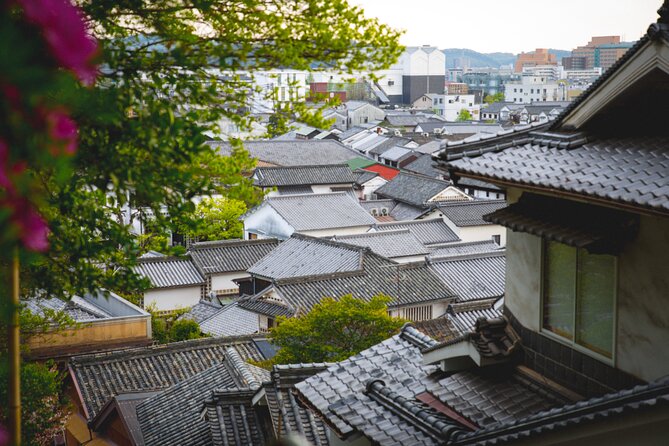
With its rich cultural heritage and picturesque architecture, Kurashiki Bikan Historical Quarter is a year-round destination, but visitors can make the most of their trip by timing it just right.
The best time to visit Kurashiki Bikan is during the spring (March to May) and autumn (September to November), when the weather is mild and comfortable, making it perfect for strolling through the historic streets.
Avoid visiting during the peak summer months (June to August) when the heat and humidity can be overwhelming.
Take advantage of the Cherry Blossom Festival in early April, which adds an extra layer of magic to the quarter’s charm.
If you’re looking for a more subdued atmosphere, consider visiting during the winter months (December to February), when the crowds are smaller and the scenery takes on a serene, peaceful quality.
Getting to the Historical Quarter
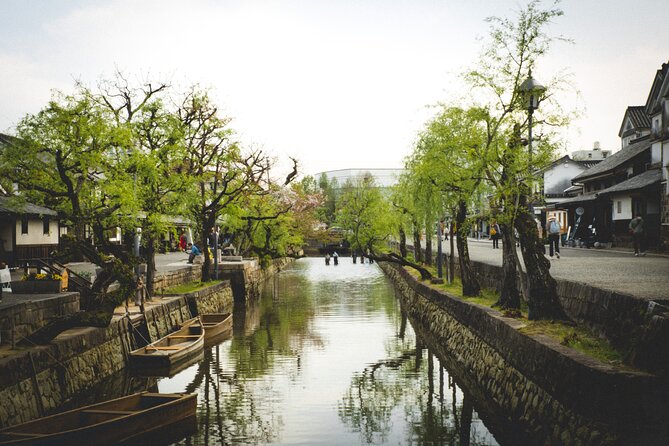
They step off the train at Kurashiki Station, and suddenly, they’re just a stone’s throw away from the picturesque Historical Quarter.
From here, it’s a short stroll to the Ohara Museum of Art, a great starting point for their adventure. If they’re feeling peckish, they can grab a snack at one of the local cafes before setting off.
The Historical Quarter is easily accessible on foot, and the scenic route takes them through charming streets lined with traditional shops and eateries.
With its well-marked signs and compact size, navigating the area is a breeze, allowing them to focus on soaking up the historic atmosphere and unique charm of Kurashiki Bikan.
Insider’s Guide to Local Cuisine
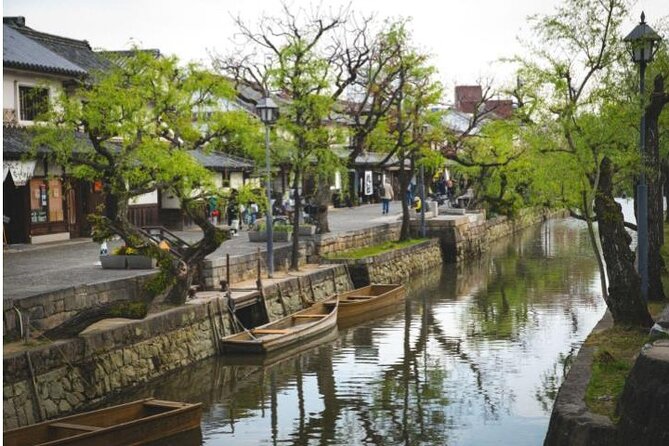
Five-star chefs and humble food stalls alike serve up Kurashiki’s signature flavors, a delicious blend of traditional Japanese cuisine with a unique Okayama twist.
This fusion is a result of the region’s rich history and cultural exchange.
To truly experience Kurashiki’s culinary scene, be sure to try:
- Kibi Dango: sweet, chewy rice balls typically served with green tea
- Okayama-style Barazushi: pressed sushi made with fresh seafood and vinegared rice
- Momotaro Amanattō: a classic Japanese sweet made with azuki beans and mochi, named after the famous Japanese folktale character Momotaro
These local specialties will give you a taste of Kurashiki’s unique flavor profile, and leave you wanting more.
Shopping in Kurashiki Bikan
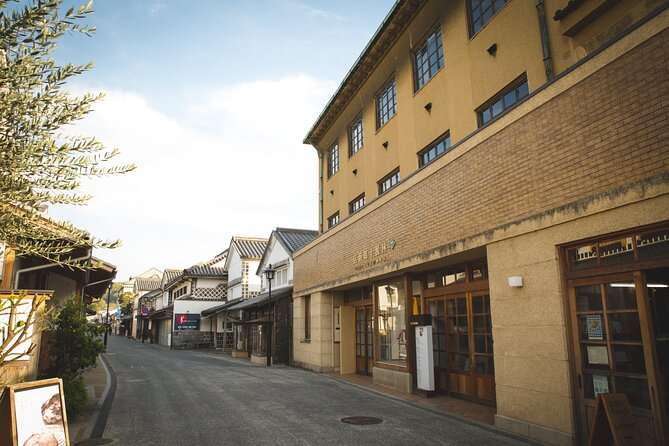
Beyond the historic quarter’s charming canals and Edo-era architecture, Kurashiki Bikan’s shopping scene unfolds like a treasure trove of unique boutiques, artisanal shops, and local markets waiting to be discovered.
You’ll find one-of-a-kind souvenirs, handmade crafts, and exclusive local products that can’t be found anywhere else.
The quarter’s shopping streets are lined with beautifully restored old buildings, now home to trendy boutiques and specialty stores.
From traditional Japanese ceramics to modern fashion, there’s something for every taste and style.
With its relaxed atmosphere and friendly shopkeepers, shopping in Kurashiki Bikan is an experience in itself.
Take your time, wander around, and uncover the hidden gems of this charming quarter.
Tips for Visiting the Quarter
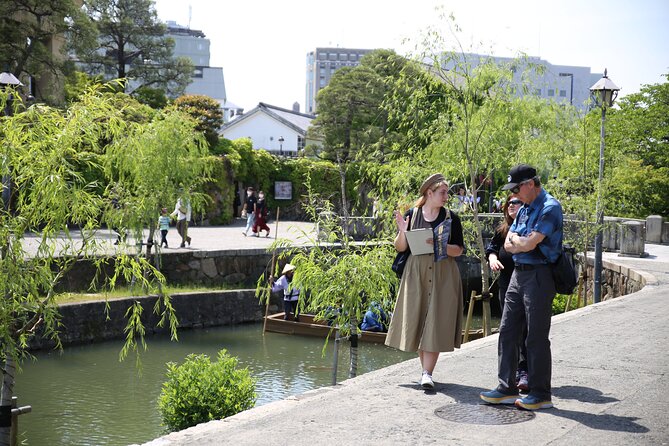
Before diving into the quarter’s charming streets, plan ahead to make the most of your visit, as Kurashiki Bikan’s hidden gems are best uncovered with a little insider knowledge.
To ensure a smooth and enjoyable experience, consider the following tips:
Get there early to beat the crowds and make the most of the morning light, which is perfect for capturing Instagram-worthy shots.
Wear comfortable shoes, as you’ll be doing a lot of walking on cobblestone streets and exploring the quarter’s many alleys.
Bring a refillable water bottle, as staying hydrated is essential, especially on hot summer days.
Frequently Asked Questions
Is the Tour Wheelchair Accessible for Travelers With Disabilities?
She checks the fine print and discovers, sadly, that this tour isn’t wheelchair accessible, so travelers with disabilities might need to look elsewhere for a more inclusive experience that caters to their needs.
Can I Cancel or Reschedule My Tour if I Have a Medical Emergency?
In a pinch, she can cancel or reschedule her tour up to 24 hours before it starts, thanks to the flexible booking policy, which offers a free cancellation or rescheduling option in case of a medical emergency.
Are There Any Age or Weight Restrictions for This Tour?
She checks the fine print, finding no specific age or weight restrictions, but notes travelers should have moderate physical fitness and aren’t recommended for those with certain medical conditions, like back problems or pregnancy.
Can I Bring My Pet or Service Animal on the Tour?
She can’t bring her furry friend along, unfortunately – the tour doesn’t allow pets or service animals, so it’s best to leave them behind; instead, focus on soaking up the historic vibes with the group!
Are There Any Discounts Available for Students, Seniors, or Military Personnel?
She wonders if there are any discounts for students, seniors, or military personnel, but unfortunately, the tour operator doesn’t explicitly offer any special rates for these groups, so she’ll have to pay the regular price.
Not for you? Here's more of our most recent tour reviews happening neaby
Final Words
As you wander through Kurashiki Bikan’s charming streets, the past comes alive in every brick, beam, and ornate detail.
With its unique blend of old and new, this quarter is a living, breathing testament to Japan’s rich cultural heritage.
So, take a stroll along the scenic canals, indulge in local cuisine, and soak up the atmosphere – Kurashiki Bikan is ready to enchant, and leave you besotted with its timeless charm.


